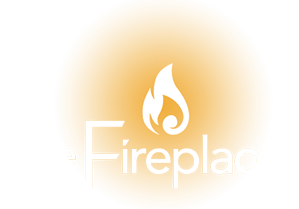
How to Specify the Right Outdoor Fire for the Project
Sitting beside a roaring fire is one of the most memorable ways to spend a summer night, or to get cosy on a cool winter evening. Installing an outdoor fireplace is a stylish addition to a backyard or patio area, providing a welcoming focal point for social gatherings, alfresco dining, and in the evenings a roaring fires adds that extra-magical feel. Even tiny backyards can feature some flickering flames around a fire-pit adding just as much charm with the added benefit of cooking on the grill.
The Fireplace has a range of outdoor fire options for different sized outdoor areas and needs; Jetmaster Alfresco wood fire and BBQ grill in a range of sizes, the Jetmaster Quadro wood fire, BBQ grill and pizza oven, Jetmaster Alfresco Gas a flue-less fire and the Hearthstone outdoor wood fire-pit.
Selecting the appropriate size of fireplace depends on how close the homeowners will be to the fireplace and what’s overhead. For example, if the fireplace is within an enclosed terrace or deck you may not need a large fire to heat the surround area because the walls and ceiling will retain some heat. Location of chairs and tables and where people are sitting in relation to the fire also needs to be considered, too close and this could be uncomfortably warm.
In contrast, an open aired large area could be ideal for a large stand-alone fireplace, allowing for many people to stand or sit near. It is also important to consider the flue in relation to nearby structures. If the outdoor fireplace structure is joined to the home, the flue will need to extend until it is 3m away from the roofline or nearby structure or 600mm above the ridgeline. Whereas a stand-alone fire may only need a couple of lengths of flue so long as clearances to nearby structures are met, such as neighbouring houses.
Considerations before specifying an outdoor fireplace or fire-pit
Before specifying a fireplace or fire-pit, it’s a good idea to think about how the fire is to be used. Do the clients want a multifunctional heating and cooking appliance, or heating only or maybe it’s for aesthetic decorative purposes?
Check out local codes for outdoor wood-burning fires as different areas may have specific regulations regarding what type of fuel can be used. Burn bans typically prohibit the use of wood-burning fires for air-quality purposes, however, many areas throughout New Zealand allow outdoor wood burning fires that can also be used for cooking. If wood burning isn’t possible there is always gas as an option.
The need for a building consent to build a structure for the outdoor fire can depend on placement. If the structure is joined to the house, then a consent will be needed but if it is freestanding in the backyard a consent may not be needed. However, in that case, a resource consent may still be needed. Check with the local council before committing to a new fireplace build.
The location of a fire has a strong social impact on outdoor living spaces. Fires tend to attract people, so wherever one is located is likely to become a popular gathering place. There are a few key questions to consider.
What size is the outdoor space?
A small backyard might not be able to handle a full-sized fireplace. It’s important to have a fire that is proportional to the area. The architecture or landscaping around the house may make it difficult to accommodate certain types of fires. Covered outdoor patios may have ventilation requirements or ceiling or combustible wall clearances to meet. Check the manufacturer’s installation instructions for minimum requirements.
Is the deck combustible?
Can the deck withstand the weight of a fireplace and structure? If a deck is combustible, a non-combustible hearth that protects the deck will be required — check the size of this as it might encroach on the available space. Checking the manufacturer’s installation instructions to confirm the minimum clearances and installation requirements will provide clarity on the size of fireplace that works best.
Is it a windy area?
Be aware of how smoke and embers may blow about so guests and neighbours are not bothered and homeowners not at risk of setting the area ablaze.
Selecting a fire and designing an outdoor area is fun and will not only add enjoyment to outdoor living, but can also add value to the client's property. If you’re unsure about which appliance best suits your project's needs or have architectural plans that require checking for compliance please contact, Angela Hiddleston, Architectural Advisor at The Fireplace with over 17 years of fireplace industry experience.
















